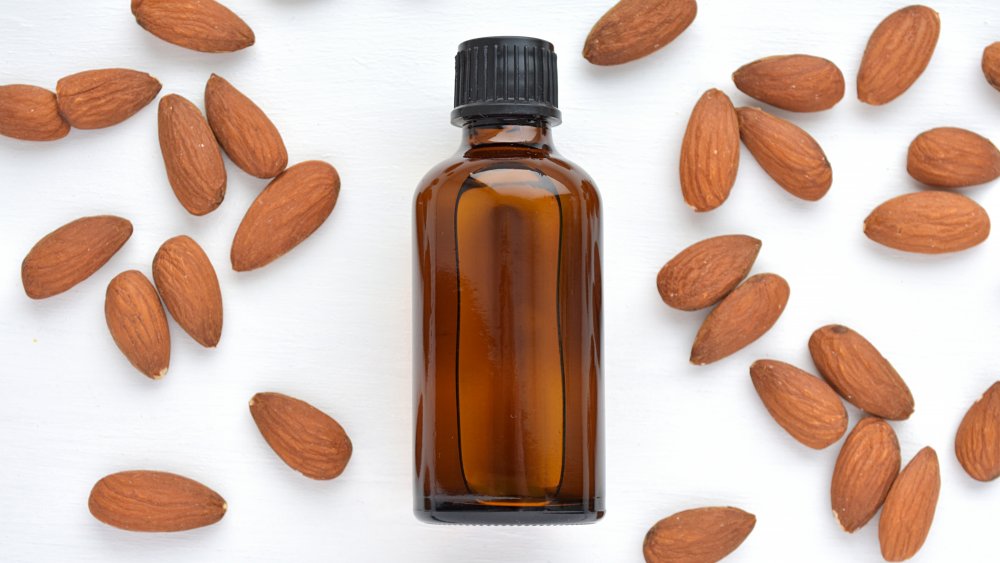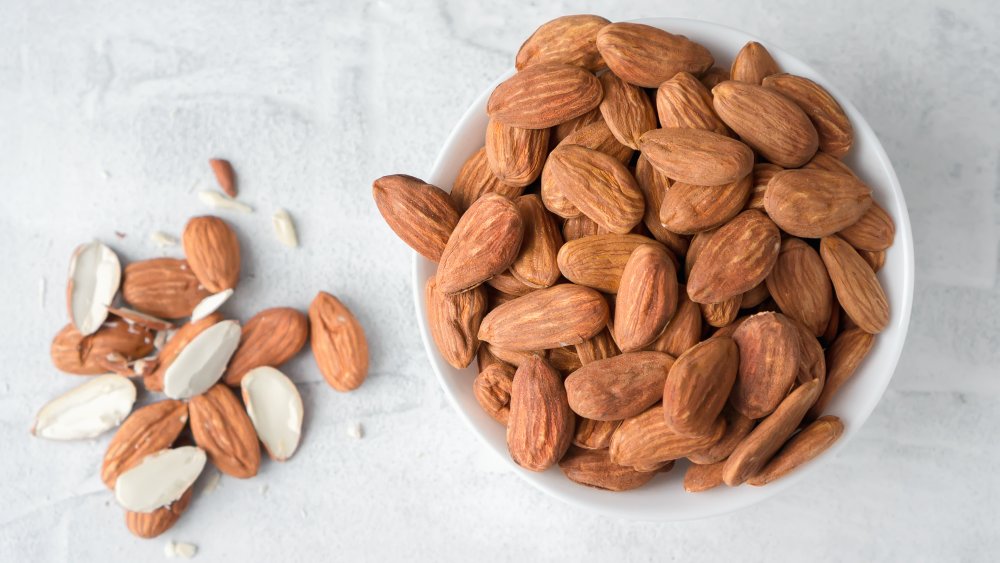The Strange Place Almond Extract Gets Its Flavor
Almonds are the go-to "nut" in the United States. According to the U.S. Department of Agriculture, the increase for these favored nuts has increased over 400 percent since 1980, largely because of their nutritional value and health benefits (via LiveScience).
But did you know that while we commonly refer to almonds as nuts, they are really a stone fruit? Stone fruits, or drupes, are called stone fruits because of the pit (or stone) that is in the center of the fleshy fruit. Stone fruits include peaches, plums, apricots, cherries, and — you guessed it — almonds.
If you were to see an almond on a tree, you might think it looks a little like a small, unripe, green peach — only the outside is leathery and tough to the touch. Peaches, being a part of the stone fruit family, share similar characteristics to almonds. In fact, if you were to crack open a peach pit, it would look a little like an almond, and what's even more surprising, it might taste a little like an almond (via Botanist in the Kitchen).
Hard to believe? Well, here's another mind-bender: almond extract, which is used in many baked goods and desserts, is not necessarily made using almonds.
So, what's really in almond extract?
The truth about what's in almond extract
To make pure almond extract, it requires three ingredients: water, alcohol, and bitter almond oil which contains something called benzaldehyde. Benzaldehyde is found in all drupe seeds and it's the main ingredient in almond extract that determines how bold or mild the almond flavor is.
But here's the kicker — since benzaldehyde is found in all drupe seeds, manufacturers of almond extract can use the drupe of an apricot, peach, or other fruit in the stone fruit family to obtain the almond oil. This is known as the "drupe dupe" (via My Recipes).
While this might sound a little odd, it gets a little weirder. Cook's Illustrated conducted a taste test experiment with almond extracts and found that the extract that was partly made with actual almonds was found to be too mild. Additionally, they tested one brand that used apricot drupes as the source for their almond oil and another that used a combination of almonds, apricots, peaches, plums, and cherries to create theirs. These almond extract brands that were made from other drupes were actually ranked higher for the intensity of their almond flavor. And extract snobs may want to stop reading here, because the testers couldn't tell the difference between the pure almond extract and the imitation versions.

